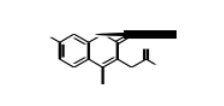
货期 一周
包装:瓶装/袋装
地址:上海
厂家:上海金畔生物科技有限公司


货期 一周
包装:瓶装/袋装
地址:上海
厂家:上海金畔生物科技有限公司
cas79422-73-4|2-氨基-2-(3-溴苯基)乙酸|DL-3-溴苯基甘氨酸

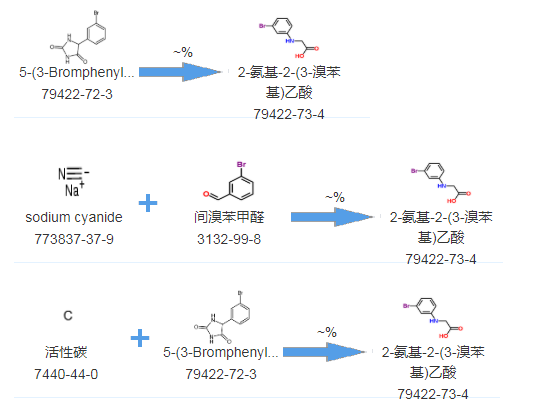
Azidoacetic Acid CAS18523-48-3
叠氮乙酸名称
中文名
英文名
中文别名
英文别名
Acetic acid,2-azido
azido acetic acid
Triazidoacetic acid
叠氮乙酸物理化学性质
沸点
熔点
分子式
分子量
精确质量
PSA
储存条件 通风低温干燥,与铁和铁盐分开存放
纯度:>90%
产地:上海
包装:mg与g级别
快递:顺丰,圆通,申通等
包装:瓶装
供应商:上海金畔生物科技有限公司
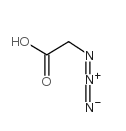
相关产品
BCN-alkyne(endo)
BCN-amine(endo)
BCN-amine(exo)
BCN-Biotin(exo)
BCN-C2-BCN(exo)
BCN-NHS(exo)
BCN-PEG3-amine(endo) CAS:1883512-27-3
BCN-PEG3-amine(exo) CAS:1841134-72-2
BCN-PEG3-Biotin(endo)
BCN-PEG3-Biotin(exo)
BCN-PEG3-F(endo)
常见有机溶剂的英文缩写整理-小常识分享
DTPA-bis haihydride CAS 23911-26-4
中文名称:二亚乙基三胺五乙酸二酐
中文同义词:DTPA酸酐;N,N-二[2-(2,6-二氧吗啉代)乙基]氨基乙酸;
二亚乙基三胺五乙酸二酐(DTPA-DIANHYDRIDE);
二乙烯三胺五乙酸二酐DTPA;二乙烯三胺五乙酸二酐;
二亚乙基三胺五乙酸二酐;2-(双(2-(2,6-二氧代吗啉-4-基)乙基)氨基)乙酸;
N,N-双[2-(2,6-二氧代-4-吗啉基)乙基]-甘氨酸
英文名称:DIETHYLENETRIAMINEPENTAACETICDIANHYDRIDE
英文同义词:
N,N-BIS[2-(2,6-DIOXOMORPHOLINO)ETHYL]GLYCINE;DIETHYLENETRIAMINEPENTAACETICACIDANHYDRIDE;
DIETHYLENETRIAMINEPENTAACETICANHYDRIDE;
DIETHYLENETRIAMINEPENTAACETICDIANHYDRIDE;
DIETHYLENETRIAMINE-N,N,N',N'',N''-PENTAACETICACIDANHYDRIDE;
DIETHYLENETRIAMINEPENTAACETICACIDDIANHYDRIDE;DTPAANHYDRIDE;
DTPADIANHYDRIDE
CAS号:23911-26-4
分子式:C14H19N3O8
分子量:357.32
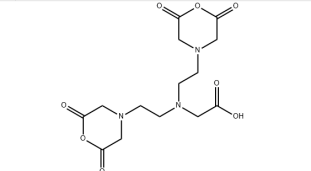
大环配体配合物,大环配体配合物是指环状骨架上带有O、N、P 、S 等多个配位原子的多齿配体形成的环状配合物。
上海金畔生物有限公司可以提供各种大环化合物,包含大环配体、双功能螯合剂、环糊精、聚醚、葫芦脲、卟啉、酞菁、磁共振试剂、反应中间体等一系列产品;
DOTA tris(tBu)ester NHS ester CAS 819869-77-7
Maleimide-DOTA CAS 1006711-09-5
Maleimide-DOTA-GA CAS 1800229-46-2
DOTA-GA-Anhydride CAS 1375475-53-8
Eu-DOTA-4AmC CAS:481668-57-9
Tm-p-SCN-Bn-DOTA CAS:2126179-32-4
DO2AtBu CAS 162148-48-3
DO3AtBu CAS 122555-91-3
DO3AM CAS 331230-43-4
DOTAM CAS 157599-02-5
DOTAEt CAS 137076-50-7
NO2AtBu CAS 174137-97-4
NOTAM CAS 180299-76-1
TETRAM CAS 220554-75-6
TETAEt CAS 126320-57-8
TETAMEt2 CAS 126320-56-7
TETAMMe2 CAS 345612-68-2
TETAM CAS 345612-63-7
CB-TE2A CAS 313229-90-2
BCN-DOTA
1.关于颜色
产品因不同产品的分子量不同,产品性状和颜色会有差别。
2.关于客服
如您的咨询没能及时回复,可能是当时咨询量过大或是系统故障。
我们将提供售后服务。
3.关于发货
我们的合作快递公司有顺丰、圆通、申通、韵达。
仅用于用于科研,不能用于人体试验(zyl 2022.04.27)
NOTA CAS:56491-86-2
中文名称:1,4,7-三氮杂环壬烷-1,4,7-三乙酸
中文同义词:1,4,7-三氮杂环壬烷-N,N',N''-三乙酸;1,4,7-三氮杂环壬烷-1,4,7-三乙酸;NOTA试剂;1H-1,4,7-三嗪氨酸-1,4,7-三乙酸,六氢;2,2',2''-(1,4,7-三氮杂环壬烷-1,4,7-三基)三乙酸
英文名称:1,4,7-triazacyclononhaie-N,N',N''-triaceticacid
CAS号:56491-86-2
分子式:C12H21N3O6
分子量:303.31
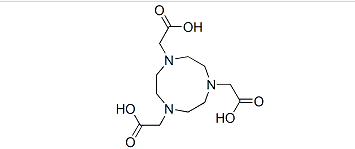
配合物的范围极其广泛。根据其结构特征,可将配合物分为以下几种类型: 简单配合物、螯合物、多核配合物、羰基配合物、金属簇状配合物、夹心配合物、大环配体配合物。
上海金畔生物有限公司可以提供各种大环化合物,包含大环配体、双功能螯合剂、环糊精、聚醚、葫芦脲、卟啉、酞菁、磁共振试剂、反应中间体等一系列产品;
DOTA tris(tBu)ester NHS ester CAS 819869-77-7
Maleimide-DOTA CAS 1006711-09-5
Maleimide-DOTA-GA CAS 1800229-46-2
DOTA-GA-Anhydride CAS 1375475-53-8
p-NCS-Bz-DOTA-GA
DO3AtBu-N-(2-aminoethyl)ethhaiamide CAS 173308-19-5
NH2-DOTA-GA CAS 1639843-65-4
NH2-PEG4-DOTA
NH2-PEG4-DOTA-GA CAS 137076-54-1
Propargyl-DOTA-tris(tBu)ester CAS 911197-00-7
BCN-DOTA
1.关于颜色
产品因不同产品的分子量不同,产品性状和颜色会有差别。
2.关于客服
如您的咨询没能及时回复,可能是当时咨询量过大或是系统故障。
我们将提供售后服务。
3.关于发货
我们的合作快递公司有顺丰、圆通、申通、韵达。
仅用于用于科研,不能用于人体试验(zyl 2022.04.27)
英文名:l-tyrosine hydrazide 中文别名:L-酪氨酸乙酸肼|L-酪胺基乙酸肼|L-酪氨酰肼

| 参数信息 | |
|---|---|
| 外观状态: | 固体或粉末 |
| 质量指标: | 95%+ |
| 溶解条件: | 有机溶剂/水 |
| CAS号: | N/A |
| 分子量: | N/A |
| 储存条件: | -20℃避光保存 |
| 储存时间: | 1年 |
| 运输条件: | 室温2周 |
| 生产厂家: | 上海金畔生物科技有限公司 |
聚羟基乙酸(PGA)
聚乙醇酸(PGA)产品说明
中文名称:聚乙交酯(又名聚羟基乙酸、聚乙醇酸)
英文名称:Polyglycolide,PGA
外观:黄色或浅褐色颗粒
化学式:(C4H4O4)n
CAS登录号:26124-68-5
聚乙醇酸(PGA)产品说明
产品特性及应用:可生物降解的脂肪族聚合物,降解速度快;良好的生物相容性;生物降解主要是通过简单的水解;具有生物再吸收性;,良好的加工性;降解率,物理性能,机械性能,和其他属性可以由PGA的各种分子量及其共聚物实现。
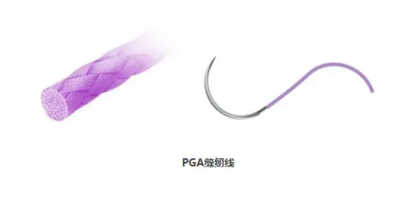
上海金畔生物科技有限公司提供各种静电纺丝纤维膜,纤维直径500-2000nm的聚乳酸、聚砜、聚己内酯、聚乙烯醇、明胶纤维膜和聚酯、聚酰胺、聚乙烯醇、聚丙烯腈柔性高聚物静电纺丝等。
静电纺载药纳米纤维膜载药定制:
PLGA载药纳米纤维膜-载紫杉醇
三维多孔纳米PLGA纤维膜-载阿霉素
载有布比卡因的PLGA纳米纤维
PLGA载药纳米纤维膜定制
静电纺载药PLGA纳米纤维膜-载药定制
PCL载药纳米纤维膜-载紫杉醇
三维多孔纳米PCL纤维膜-载阿霉素
载有布比卡因的PCL纳米纤维
PCL载药纳米纤维膜定制
静电纺载药PCL纳米纤维膜-载药定制
PLA载药纳米纤维膜-载紫杉醇
三维多孔纳米PLA纤维膜-载阿霉素
载有布比卡因的PLA纳米纤维
PLA载药纳米纤维膜定制
静电纺载药PLA纳米纤维膜-载药定制
静电纺丝纳米纤维膜载药定制
PLGA多孔静电纺丝纤维膜载药定制
PLA静电纺丝纤维膜载药定制
PCL静电纺丝载药定制
PCL聚已内酯纤维膜载药定制
PLGA电纺纤维膜载药定制服务
PLA纳米纤维膜载药定制
储存方式:
■ 本系列产品是生物降解材料,在储存过程中应避免接触水、酸性物质、碱性物质和醇类试剂以及其他可引起产品降解的试剂。
■ 本系列产品在储存过程中应密封、干燥低温(冰箱冷冻-20度)保存,应用封口机密封(使用后剩余产品不得用自封袋包装保存)。
■ 使用时,从冰箱取出室温放置,待恒温至室温擦去包装袋表面冷凝的水分后方可打开(从冰箱取出未恒温打开,空气中的水分会冷凝到产品表面,使产品降解)。使用时环境的空气湿度应小于35%,避免剩余产品受潮,影响产品质量。
NO2AtBu CAS 174137-97-4
中文名称:1,4,7-三氮杂环壬烷-1,4-二乙酸二叔丁酯
中文同义词:1,4,7-三氮杂环壬烷-1,4-二乙酸二叔丁酯;NO2A-(T-BUESTER)试剂;1H-1,4,7-三氮嗪-1,4(5H)-二乙酸,六氢,1,4-双(1,1-二甲基乙基)酯;NO-二叔丁酯
英文名称:
tert-butyl2-[4-[2-[(2-methylprophai-2-yl)oxy]-2-oxoethyl]-1,4,7-triazonhai-1-yl]acetate
英文同义词:
NO2AtBu;4,7,10-Telaazacyclododecsne-1,4,7-bullacetate:;
tert-butyl2-[4-[2-[(2-methylprophai-2-yl)oxy]-2-oxoethyl]-1,4,7-triazonhai-1-yl]acetate;
1,4,7-Triazacyclononhaie-1,4-bis(t-butylacetate);
CAS号:174137-97-4
分子式:C18H35N3O4
分子量:357.49

大环配体配合物,大环配体配合物是指环状骨架上带有O、N、P 、S 等多个配位原子的多齿配体形成的环状配合物。
上海金畔生物有限公司可以提供各种大环化合物,包含大环配体、双功能螯合剂、环糊精、聚醚、葫芦脲、卟啉、酞菁、磁共振试剂、反应中间体等一系列产品;
DOTA tris(tBu)ester NHS ester
Maleimide-DOTA
Maleimide-DOTA-GA
DOTA-GA-Anhydride
Eu-DOTA-4AmC
Tm-p-SCN-Bn-DOTA
DO2AtBu
DO3AtBu
DO3AM
DOTAM
DOTAEt
NO2AtBu
NOTAM
TETRAM
TETAEt
TETAMEt2
TETAMMe2
TETAM
CB-TE2A
BCN-DOTA
1.关于颜色
产品因不同产品的分子量不同,产品性状和颜色会有差别。
2.关于客服
如您的咨询没能及时回复,可能是当时咨询量过大或是系统故障。
我们将提供售后服务。
3.关于发货
我们的合作快递公司有顺丰、圆通、申通、韵达。
仅用于用于科研,不能用于人体试验(zyl 2022.04.28)
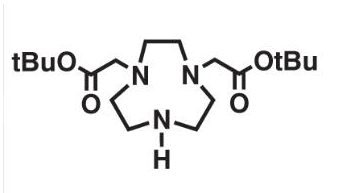

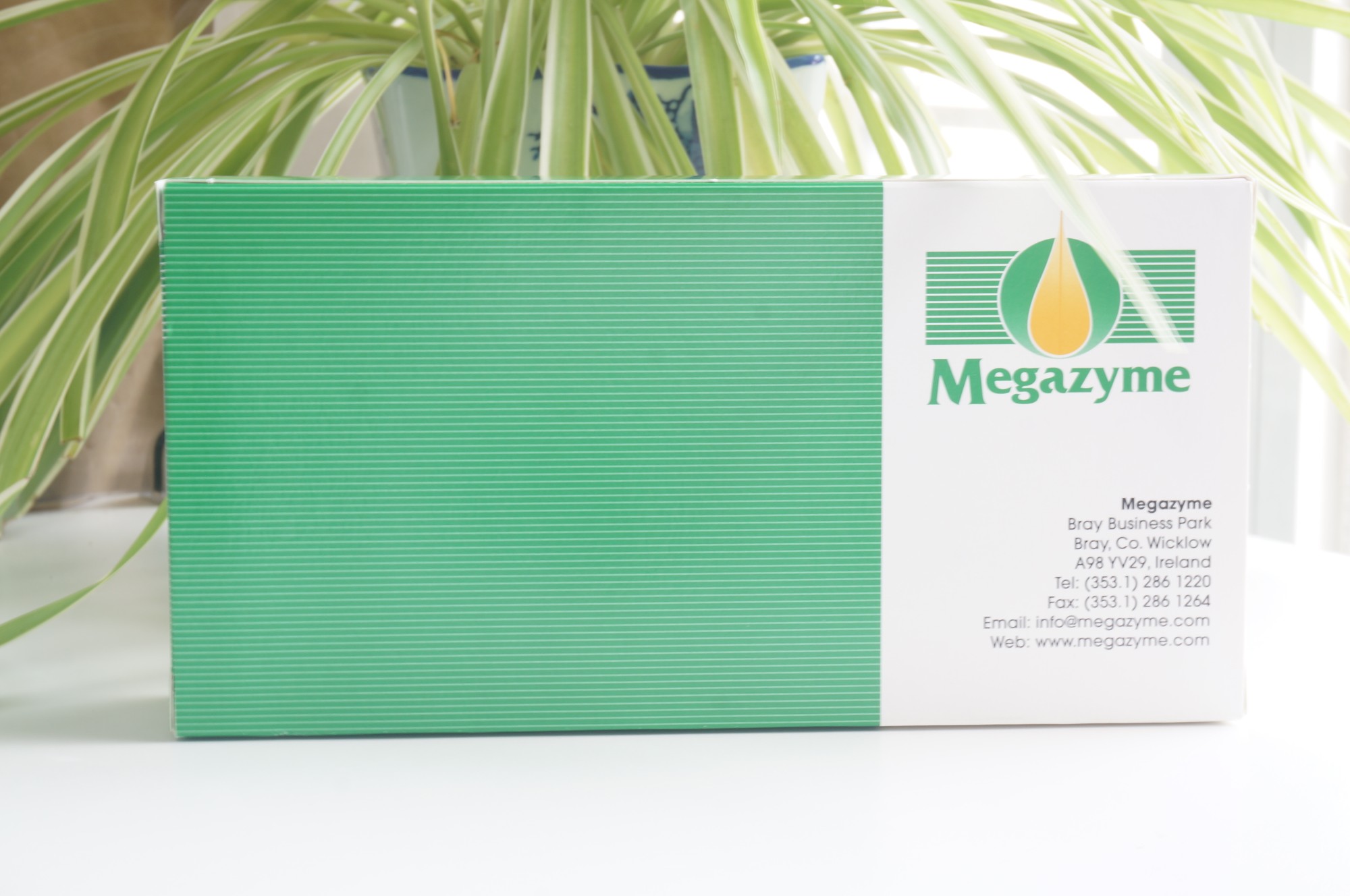
醋酸(醋酸激酶手动格式)检测试剂盒适用于食品和饮料中醋酸的测量和分析。
这种快速可靠的手动醋酸试剂盒操作简单(只需要两个吸光度读数),并且因为测量了真正的终点,所以不像其他试剂盒那样涉及复杂的计算。该产品在储存和使用期间(> 2年)非常稳定,具有延长的线性(与基于ACS的试剂盒相比),含有PVP以防止单宁抑制,并且在相对低的pH(7.4)下进行,从而使酯水解最小化相关干扰。该方法适用于食品,饮料和其他材料中乙酸/乙酸盐的测量。
比色法原理:
(乙酸激酶)
(1)乙酸+ ATP→乙酰磷酸+ ADP
(磷酸转乙酰酶)
(2)乙酰磷酸+ CoA→乙酰-CoA + P i
(丙酮酸激酶)
(3)ADP + PEP→ATP +丙酮酸
(D-乳酸脱氢酶)
(4)丙酮酸+ NADH + H + →D-乳酸+ NAD +
试剂盒大小: 72次分析
方法: 340 nm分光光度法
反应时间: ~4 min
检测限: 0.254 mg / L
应用实例:
葡萄酒,啤酒,水果和果汁,软饮料,醋,蔬菜, 泡菜,乳制品(如奶酪),肉类,鱼类,面包,烘焙产品(和烘焙剂),番茄酱,酱油,蛋黄酱,调味品,纸(和纸板),茶,药品(如输液),饲料和其他材料(如生物培养物,样品等)
方法识别: 改进方法
如欲获得报价请致电021-50837765
英文名:Acetic Acid (Acetate Kinase Manual Format)
货号:K-ACETRM
规格:72 assays (manual) / 720 assays (microplate)
市场价: 3604元
分析物意义: 常见食品的组分
Megazyme检测试剂盒优点: K-ACETRM 是运用AK和磷酸乙酰转移酶的新型、快速的手工检测试剂盒。试剂稳定
K-ACETAK (自动) 是一种以乙酸激酶(AK)为基础的,新型、稳定、快速的检测试剂盒,具有良好的线性。
This rapid and reliable manual acetic acid kit is simple to perform (only two absorbance readings required), and because a true end-point is measured, does not involve complicated calculations like other kits. This product is very stable both during storage and use (> 2 years), has extended linearity (compared to ACS based kits), contains PVP to prevent tannin inhibition, and is performed at a relatively low pH (7.4), thus minimising ester hydrolysis related interference. This method is suitable for the measurement of acetic acid/acetate in foods, beverages and other materials. Content:72 assays
乙酸检测试剂盒[乙酸激酶法]
Manual format UV-method for the determination of Acetic Acid
in foodstuffs, beverages and other materials
Principle:
(acetate kinase)
(1) Acetic acid + ATP → acetyl-phosphate + ADP
(phosphotransacetylase)
(2) Acetyl-phosphate + CoA → acetyl-CoA + Pi
(pyruvate kinase)
(3) ADP + PEP → ATP + pyruvate
(D-lactate dehydrogenase)
(4) Pyruvate + NADH + H+ → D-lactic acid + NAD+
Kit size: 72 assays (manual) / 720 (microplate)
Method: Spectrophotometric at 340 nm
Reaction time: ~ 4 min
Detection limit: 0.063 mg/L
Application examples:
Wine, beer, fruit and fruit juices, soft drinks, vinegar, vegetables,
pickles, dairy products (e.g. cheese), meat, fish, bread, bakery products
(and baking agents), ketchup, soy sauce, mayonnaise, dressings, paper
(and cardboard), tea, pharmaceuticals (e.g. infusion solutions), feed
and other materials (e.g. biological cultures, samples, etc.)
Method recognition: Improved method
Advantages
Propionate may react more slowly than acetate.
Yes, assuming that the concentration of the analyte in the sample (after sample preparation) is above the limit of detection for the kit. It may be sufficient to use the sample directly in the assay after clarification by centrifugation / filtering followed but dilution (if required) in distilled water.
The pH of the assay solution after the sample is added should be the same as that of the assay buffer that is supplied with the kit.
Low sample volumes (e.g. 0.1 mL) are not likely to affect the pH of the assay solution and therefore may not require pH adjustment.
Samples above 0.1 mL are more likely to affect the pH of the assay solution and therefore the pH of these samples should be adjusted as described in the data booklet, prior to addition to the assay.
Sometimes the addition of the last assay component can cause a small negative absorbance change in the blank samples due to a dilution effect and in such cases it is recommended that the real absorbance values be used in the calculation of results.
No, however the sample preparation process can be tested by adding a known amount of acetic acid standard and assessing the recovery of this.
Acetic acid in liquid cell culture media/supernatants or fermentation samples can be determined without any sample treatment (except clarification by centrifugation or filtration) and appropriate dilution in distilled water.
If you suspect that the Megazyme test kit is not performing as expected such that expected results are not obtained please do the following:
Megazyme produces 4 acetic acid test kits:
K-ACET: uses the traditional ACS reaction. Manual format for use with spectrophotometers.
K-ACETAF: uses the traditional ACS reaction. Automated format for use with auto-analysers.
K-ACETAK: uses the more recently developed and more rapid acetate kinase reaction. Automated format for use with auto-analysers.
K-ACETRM: uses the more recently developed and more rapid acetate kinase reaction. Manual format for use with spectrophotometers.
Auto-analysers use ~ 0.315 mL reaction volumes and pathlengths between 4-8 mm which is similar to a standard 96-well microplate where a 0.315 mL reaction volume would give a pathlength of ~ 6-7 mm. Therefore K-ACETAK or K-ACETAF can be used directly in a 96-well microplate format with minimal assay optimisation.
If preferred, K-ACET or K-ACETRM may also be easily converted for use in a 96-well microplate format. Basically, the assay volumes for the cuvette format must be reduced approximately 10-fold for use in a 96-well microplate. However, some assay optimisation may be required (e.g. increased enzyme concentration etc.) and unlike the cuvette which has a set pathlength of 1 cm, the pathlength in the microplate is dependent upon the volume of liquid in the well. Therefore to enable the calculation of the amount of analyte in the samples from tests performed in the microplate format one of the following must be done:
Acetic Acid Kit Recommendation For Microplate Format:
Either K-ACETRM or K-ACETAK is recommended for use in a 96-well microplate format and the main advantages / disadvantages are described below:
K-ACETRM:
The assay volumes of this kit should be reduced by 10-fold for use in a 96-well microplate format (some assay optimisation may be required, e.g. increased enzyme concentration etc.).
The calculation of results is achieved as outlined above in either of points 1, 2 or 3.
The final pH of the kit assay after the sample is added should not change from what it should be (as stated in the kit for the assay buffer). If it does change then the sample will require pH adjustment. In most cases the sample volume being used is low relative to the final assay volume and in this case the pH of the kit assay is unlikely to be affected.
Where the amount of analyte in a liquid sample is unknown, it is recommended that a range of sample dilutions are prepared with the aim of obtaining an absorbance change in the assay that is within the linear range.
Where solid samples are analysed, the weight of sample per volume of water used for sample extraction/preparation can be altered to suit, as can the dilution of the extracted sample prior to the addition of the assay, as per liquid samples.
For users who are not familiar with how to use the Megazyme tests kits then it is recommended that they follow this example, e.g. D-Fructose/D-Glucose Assay kit K-FRUGL (http://secure.megazyme.com/D-Fructose-D-Glucose-Assay-Kit):
1. The kit components are listed on pages 2-3 of the kit booklet.
2. Prepare the kit reagents as described on page 3.
3. For separate measurements of glucose and fructose follow procedure A on page 4.
4. Pipette the volumes listed for water, sample, solution 1 and solution 2 into 3 mL, 1 cm pathlength cuvettes. Duplicate sample assays and duplicate blanks are recommended. Mix the contents of each cuvette by inversion (seal the cuvette using parafilm or a plastic cuvette cap – do not use a finger) then after ~3 min record the first absorbance reading of each cuvette at 340 nm (this is reading A1).
5. Then add suspension 3 and mix the contents of each cuvette by inversion. Incubate for 5 minutes then record the absorbance reading of each cuvette at 340 nm (this is reading A2). NB. It is essential that the reaction is compete. To assess this, record the absorbances at ~ 2 minute intervals and until the absorbance plateaus. A stable absorbance indicates that the reaction is complete. If the absorbance continues to increase then continue to record absorbances until it plateaus and only then record absorbance reading A2.
6. Then add suspension 4 and mix the contents of each cuvette by inversion. Incubate for 5 minutes then take absorbance reading of each cuvette at 340 nm (this is reading A3). NB. As above, assess that the reaction has completed by take subsequent readings at ~2 min intervals.
7. For simple, automated results analysis, input the absorbance readings (A1, A2, A3) for samples and blanks into the K-FRUGL MegaCalc.
To ensure that the assay is working, and being performed correctly it is recommend that the test is performed using the standard sample that is provided with the kit and to obtain the expected values before proceeding to test real samples.
It is recommend that new users also watch this video which highlights how to perform the assays.
Many of the other Megazyme test kits follow a similar format.
If there are any concerns with any kit components, the first thing to do is to test the standard sample (control sample) that is supplied with the kit and ensure that the expected value (within the accepted variation) is obtained before testing any precious samples. This must be done using the procedure provided in the kit booklet without any modifications to the procedure. If there are still doubts about the results using the standard sample in the kit then send example results in the MegaCalc spread sheet to your product supplier (Megazyme or your local Megazyme distributor).
For samples with low concentrations of analyte the sample volume used in the kit assay can be increased to increase sensitivity. When doing this the water volume is adjusted to retain the same final assay volume. This is critical for the manual assay format because the assay volume and sample volume are used in the calculation of results.
The volume/weight of sample and total volume of the extract can be modified to suit the sample. This will ultimately be dictated by the amount of analyte of interest in the sample and may require empirical determination. For low levels of analyte the sample:extract volume ratio can be increased (i.e. increase the sample and/or decrease the total extraction volume).
Alternatively, for samples with low concentrations of analyte, a larger sample volume can be added to the kit assay. When altering the sample volume adjust the distilled water volume added to the assay accordingly so that the total assay volume is not altered.
上海金畔生物科技有限公司提供诱导大鼠腹腔巨噬细胞巯基乙酸 ,欢迎访问官网了解更多产品信息和订购。
诱导大鼠腹腔巨噬细胞巯基乙酸
product name:Rat Peritoneal Macrophages-Thioglycollate-elicited(诱导大鼠腹腔巨噬细胞巯基乙酸);
cat no:ABC-TC4193;
Size/Quantity:1 vial;
Biosafety Level:1;
Shipping Info:Dry Ice;
Storage:Liquid Nitrogen;
Description:Rat Peritoneal Macrophages are derived from the thioglycollate-elicited peritoneal cavity of Sprague-Dawley Rats. Prior to shipping, cells are immediately cryo-preserved in vials. Each vial contains at least 9 x10^6 cells and is delivered frozen.
Rat Peritoneal Macrophages were tested for expression of markers using antibodies, CD11b by flow cytometry. Rat Peritoneal Macrophages are negative for bacteria, yeast, fungi, and mycoplasma and can be expanded on a multiwell culture plate ready for experiments under the cell culture conditions specified by AcceGen. Repeated freezing and thawing of cells is not recommended.
Standard biochemical procedures performed with cell cultures include RT-PCR, Western blotting, immunoprecipitation, immunofluorescent staining, flow cytometry or generating cell derivatives for desired research applications.;
Quality Control:All cells test negative for mycoplasma, bacteria, yeast, and fungi;
Application:For research use only.
| 产品名称 | SIA Crosslinker |
|---|---|
| 中文名称 | 碘乙酸 N-羟基琥珀酰亚胺酯 / 碘乙酸 |
| 英文名称 | SIA Succinimidyl iodoacetate |
| 分子量 | 283.0 |
| CAS | 39028-27-8 |
| 分子式 | C6H6INO4 |
| 存储条件 | -20°,避光 |
| 保存时间 | 两年 |
| 其它信息 | 溶于大部分有机溶剂,如:DCM、DMF、DMSO、THF等等。在水中有很好的溶解性 |